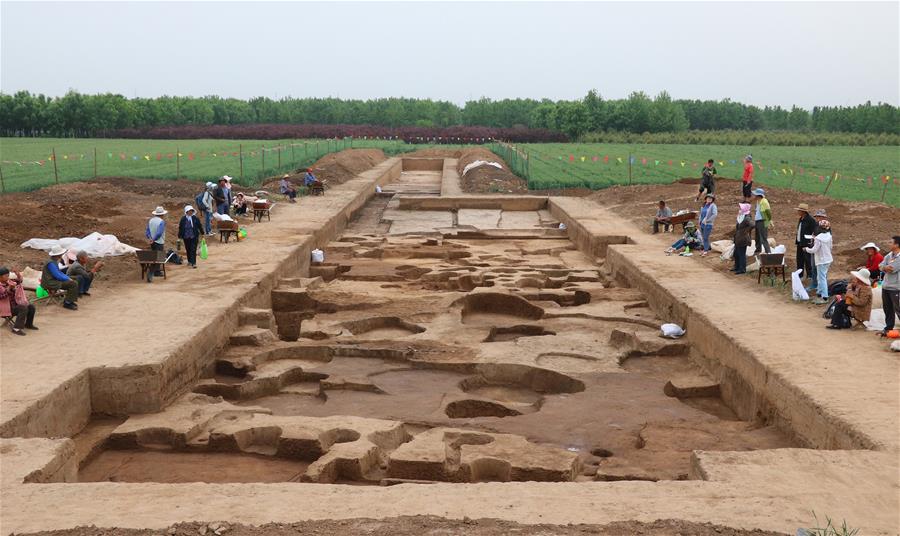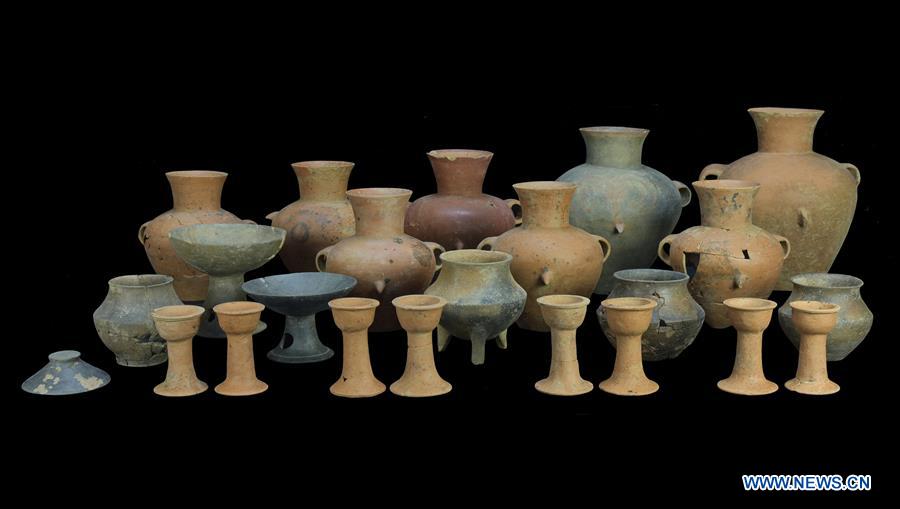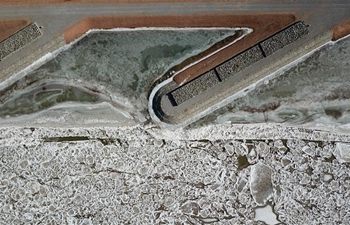
File photo shows the Neolithic site in Jinan City, capital of east China's Shandong Province. Surface structures and half crypt buildings, defensive walls and trenches, and jade artifacts were found in a prehistoric settlement from about 5,000 to 4,600 years ago in today's Shandong Province. Archeologists found pottery and jade vessels in the tombs ruins, which were used in sacrifice ceremonies and banquets by the ruling class to distinguish themselves from the common people, according to the archeologists. The Neolithic relics showed the accelerating polarization of the rich and the poor, and the yawning gap among people of different social status. The findings in Shandong site was announced one of the six greatest archeological discoveries of the country in 2017 by the Chinese Academy of Social Sciences. The six findings contain information on human activity over a time span of more than 40,000 years. (Xinhua)
HIERARCHY EMERGED
Surface structures and half crypt buildings, defensive walls and trenches, and jade artifacts were found in a prehistoric settlement from about 5,000 to 4,600 years ago in today's Shandong Province, eastern China.
Archeologists found pottery and jade vessels in the tombs ruins, which were used in sacrifice ceremonies and banquets by the ruling class to distinguish themselves from the common people, according to the archeologists.
The Neolithic relics showed the accelerating polarization of the rich and the poor, and the yawning gap among people of different social status.

File photo shows the pottery vessels unearthed in the Neolithic site in Jinan City, capital of east China's Shandong Province. Surface structures and half crypt buildings, defensive walls and trenches, and jade artifacts were found in a prehistoric settlement from about 5,000 to 4,600 years ago in today's Shandong Province. Archeologists found pottery and jade vessels in the tombs ruins, which were used in sacrifice ceremonies and banquets by the ruling class to distinguish themselves from the common people, according to the archeologists. The Neolithic relics showed the accelerating polarization of the rich and the poor, and the yawning gap among people of different social status. The findings in Shandong site was announced one of the six greatest archeological discoveries of the country in 2017 by the Chinese Academy of Social Sciences. The six findings contain information on human activity over a time span of more than 40,000 years. (Xinhua)















